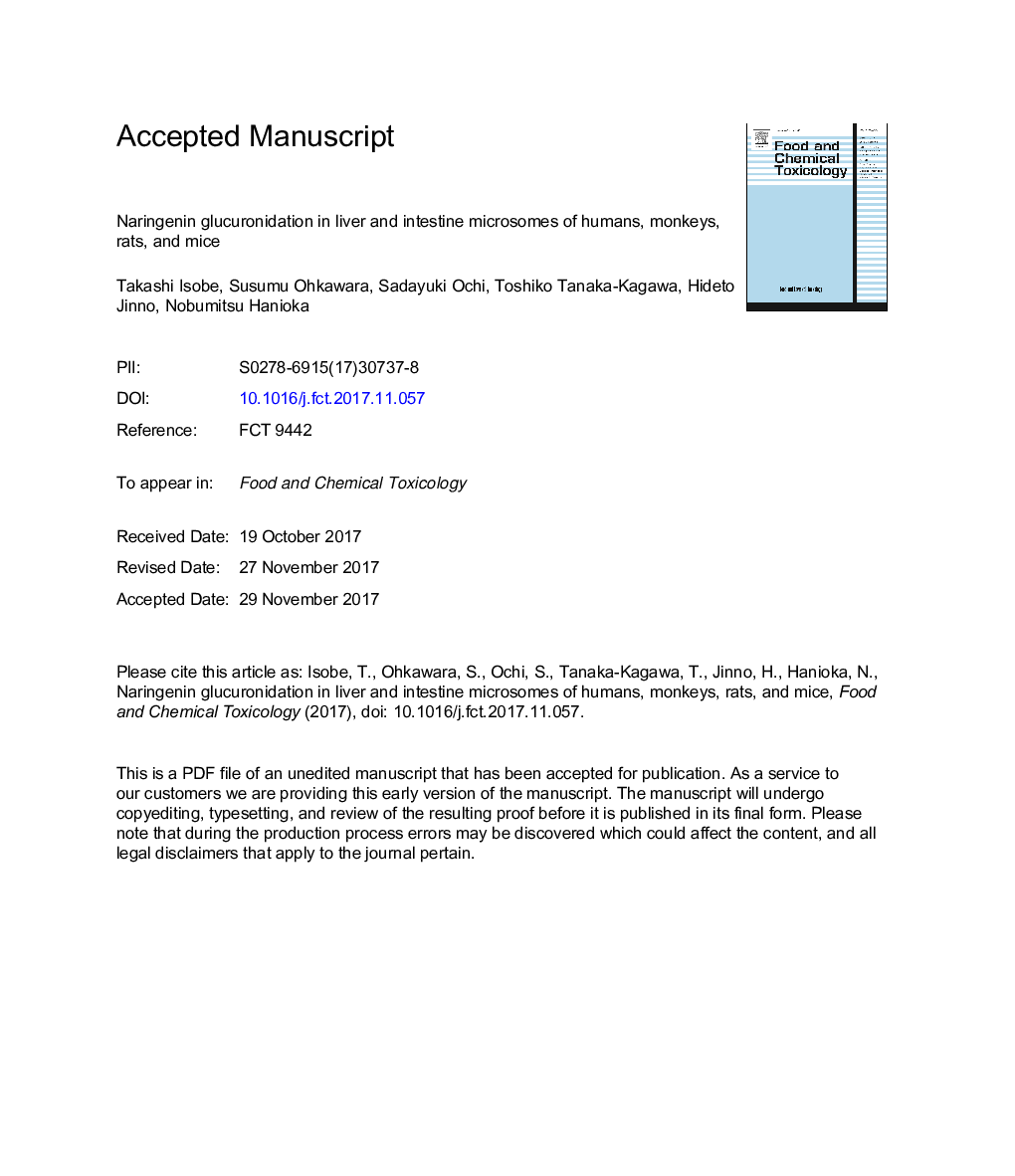| Article ID | Journal | Published Year | Pages | File Type |
|---|---|---|---|---|
| 8548593 | Food and Chemical Toxicology | 2018 | 26 Pages |
Abstract
Naringenin, a flavanone found in citrus fruits, is mainly metabolized into glucuronide(s) by UDP-glucuronosyltransferase (UGT) enzymes in mammals. In the present study, the glucuronidation of naringenin in the liver and intestine microsomes of humans, monkeys, rats, and mice was examined. The kinetics of 7-glucuronidation in human liver and intestine microsomes followed the Michaelis-Menten model. Kinetics in mouse liver and intestine microsomes also followed the Michaelis-Menten model, whereas those in monkey and rat liver microsomes fit the biphasic model. Kinetics in monkey and rat intestine microsomes fit the Michaelis-Menten and substrate inhibition models, respectively. CLint values were mice > monkeys > rats > humans for liver microsomes, and mice > rats > monkeys > humans for intestine microsomes. In 4´-glucuronidation, activities in human liver microsomes and monkey liver and intestine microsomes were negligible or very low. Kinetics in rat and mouse liver microsomes followed the biphasic and Michaelis-Menten models, respectively. CLint values were rats > mice for liver microsomes, and rats > mice > humans for intestine microsomes. These results suggest that the metabolic abilities and regioselectivity of UGT enzymes toward naringenin in the liver and intestines generally differ between primates and rodents.
Keywords
Related Topics
Life Sciences
Agricultural and Biological Sciences
Food Science
Authors
Takashi Isobe, Susumu Ohkawara, Sadayuki Ochi, Toshiko Tanaka-Kagawa, Hideto Jinno, Nobumitsu Hanioka,
